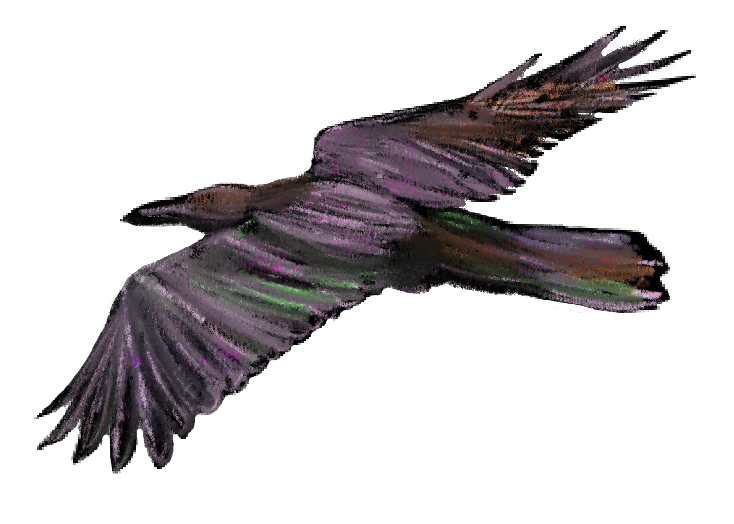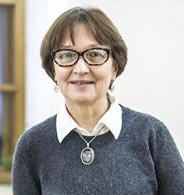

Abstract
“I want to travel all over the mainlands,
and then to get back.
And you, the eagle with powerful wings, fly to me.
Kyk-kyk! Kyk kyk!
I want to visit all the countries of the world,
that’s my intention.
Where are you, my grey steed, come to me here.
Iy-hoo! Iy-hoo!
I want to travel all over the spaces of the Universe,
and to get back.
Black raven, I ask you to arrive to me.
Kark-kark! Kark-kark!
I want to reach the brink of heaven,
and to get back.
Where are you, the bird of transformation,
come to me.
Syg-syg! Syg-Syg!”
Tuvinian invocation.[1]
Children are shamans until the time when they stop to take fairy tales for serious any more. Little children remember their dreams and accept them as if the dreams were as real as day adventures. Parents usually tell their child something like, “It is nothing but a dream, do not pay attention to it, forget it”. As a result, most adults harbor free and creative childish parts of their nature hidden, forgotten, and suppressed. The creative but suppressed parts of soul appear in night dreams, and try to break away thick and reliable walls of scientifically proved knowledge, and well established social model of behavior in day physical reality.
Regardless of the walls many people cannot help their curiosity about alternative states of consciousness. Scientific researches, and elaborate techniques based on old traditions (like yoga) are used to uncover something we naturally have from birth. Children grow, get older, and leave behind their natural shaman vision and acceptance of the Nature. They may leave forever fairy tale books as well. However, their dreams still remain and lead to another reality, where one can fly. Just the awakening of curiosity because of a dream story told by somebody, just a strange, bright dream or a nightmare of your own can provoke remembering dreams and desire to understand them.
In some old traditions sleep is compared to death, and dreaming is a journey in the other world. In several languages of Siberian cultures there is but one word for both notions – shaman journey and dream. Here as an example I’ll tell you a fairy tale of Chukotka (Chukchi peninsula) about a shaman who did his work in a sleeping state. [2] It is just a fairy tale, but the tale based on an authentic tradition.
“Once upon a time an old man lived, and all his children died one by one. When his last child, his favorite son, a young man had died, the man was so upset that he did not want to bury the son. He left his dead body in his yaranga [3], and decided to look for a shaman who could raise the young man from the dead. The old man invited the most powerful shamans, they made many rituals, but nothing could help. At least he invited the shaman who did his work in sleep.”
Let me interrupt the fairy tale, and get back to dream work. I have experienced three alternative states of consciousness connected to dreaming:
— sleeping and dreaming, and a dream reality is accepted as it were a physical one;
— sleeping and lucid dreaming, when I understand that it is a dream reality;
— twilight zone – dreaming on the verge of sleeping state, when I still accept physical reality (despite my eyes are closed), and I have some visions at the same time.
What are the similarities to the shaman state of consciousness, if any? What could the state of the shaman who worked in sleep?
“When the shaman came, he told the old man to be on guard in order not to allow something to disturb the shaman during his work. He then laid down beside the dead body, fell asleep, and his soul took a journey to seek for the place where the young man had been captured. He had to travel very far away, and at last he realized that the young man’s soul was taken to the most remote star. Two wolfs stayed on guard at the entrance to a yaranga situated on the star, and they did not allow to come in. The shaman understood that he had to give them something that belonged to the young man’s father as an offering. The shaman woke up and asked the old man for his beads [4]. This time the shaman told that he was going to sleep during three days, and it was forbidden to disturb him or to interrupt his sleep. Holding the old man’s beads he laid down beside the dead body, and fell asleep again.”
Let’s get back to our modern knowledge of dreams. It looks like in his lucid dream the shaman could direct his journey to a certain space, and to investigate the space. Was was the space where the young man soul was prisoned?
In accordance to the Nanai[5] tradition a man has some souls. The main one is a ‘soul-tree’, which is also a symbol of power and life energy. This soul is in existence before birth. After birth another soul is received, and one can see the tree-soul in dreams. In regard to this belief a dream about a fallen tree means death. [6]
In modern books on dream symbols one can find an interpretation of dreams about meeting dead relatives. Even those people who usually do not remember their dreams, can get this kind of dreams after a relative death. The dreams are kept in memory as a highly impressive experience. I passed through this sorrowful situation myself, and I had similar dreams as well. When I had read the annotation to an audio record aimed to help to experience a state of consciousness similar to Bardo (the after death state of soul in Tibetan Buddism) I saw an amazing coincidence of the description of the state called “focus 27” [7], and the landscape of my personal dreams about meeting my relatives who passed away. Now I ask myself, “Where was my soul in these dream journeys?” I had a talk with many other people who had similar dreams. The most remarkable thing is that the dreams are not something exceptional, yet, they have similar features in description.
“When the shaman took another journey to the star, he had the offering beads in his hand. The wolfs saw the beads, and allowed him to come into the yaranga. There he saw the young man nailed to a wall. The master of the place did not allow the shaman to take the man back to the earth. Then the shaman got out, gave the beads to the wolves, and told them to drag the yaranga down to the earth. The wolfs did it.”
What was the role of the beads? In Slavic pagan rituals some objects are used for tuning dreams. For instance, a certain object should be hidden by a dreamer under the dreamer’s pillow, and it is supposed to appear in a future night dream in a certain situation. Could an object kept in the hand of the shaman give him additional tuning and power to reach the goal of his journey in his lucid dream? Did it help him to remember how to change the reality of the dream in a certain way, and how to get back safely? There are some other interesting aspects of this story, that could lead to amazing associations, for instance, the nailed body, the wolves, the flight to the star, the master (the lord) of the place on the star, etc. Here one can have associations of one’s own.
“When the house had gotten to the earth, the shaman demanded to release the young man. The master of the house had to agree. When the man was released, the shaman told the wolfs to drag the place of prisoning back to the star. Then its master turned into a giant bird and flew away. Exactly in three days the shaman and the young man woke up at the same time. The father was very happy. However the shaman gave a strict order to the young man to never go out when the sun is very hot in summer. The time passed, and the man forgot about it. Once he went out in a hot sunny day. Suddenly a giant eagle flew down from the sky, and killed him. This time the young man died forever because he did not follow the advise of the great shaman, the one who could work in sleep.”
The fairy tail tells nothing about the young man’s memories after his wakening. Perhaps, he did not remember his dreams, in other case he would followed the shaman’s advice. I was lucky to meet shamans from the Tuva Republic. The shamans told me that dreamers are very respectable people in their tradition as well. Tuva, Chukchi peninsula, and the Amur region are of different languages, and they are situated in different parts of Siberia. Yet, there are interesting correspondences between shaman cultures of different parts of the world (for example, Siberia and North America). Likewise there are dreams, which touch upon the archetypes beyond any cultural differentiation of dreamers. Perhaps a shaman’s practice opens widely the same door that one can open a little while sleeping and dreaming.
Here I have put forward many questions connected to the text of the fairy tale, and I do not try to give answers. Both shaman and dream journeys are an applied experience rather than a theoretical research. One can find the answers only in one’s personal associations to the fairy tale, one’s dreams, one’s experience of a shaman journey.
Endnotes
[1] KENIN-LOBSAN Mongush — Songs of Tuvinian Shamans. Kyzyl, 1995, publ. in Russian
[2] VOLCHENKO Maria — Prisoners of Dreams. Fairy Tales for Adult Children. Moscow, Norma publ., 1999, publ. in Russian
[3] Yaranga is a kind of a tent/teepee made of fur skins.
[4] The beads are a highly valuable object of power, a mascot that includes nails and teeth of dangerous beasts killed by a hunter owner of the beads.
[5] The Nanai people live in the Russian Far East, on the middle Amur river basin.
[6] SMOLYAK A.V. — Shaman: Character, Duties, World Overviev (the nationalities of the lower reaches of the Amur). Moscow, 1991, publ. in Russian
[7] The Monroe Institute, USA, “The Moment of Revelation”
References
Kenin-Lobsan, M. (1996). Songs of Tuvian shamans. Moscow: Kyzyl. (published in Russian)
Smolyakak, A.V. (1991). Shaman: Character, duties, world overview (the nationalities of the lower reaches of the Amur). Moscow: Kyzyl. (published in Russian)
VOLCHENKO, M. (1999). Prisoners of dreams. Fairy tales for adult children. Moscow, Norma. (published in Russian)

Maria Volchenko
The Russian Society of Researches of Dreams, chairman of the section “Dreaming and Creativity”.
PhD in Philosophy, Member of IASD since 1998, certified Regression Therapy Specialist (IBRT), artist, author of two books on dreams and a number of articles published in Russia and abroad. Member of the Creative Association of Women Artists IRIDA and the Moscow branch of the International Art Fund.